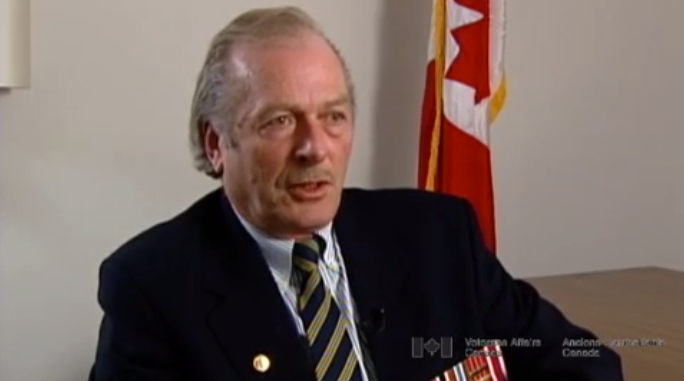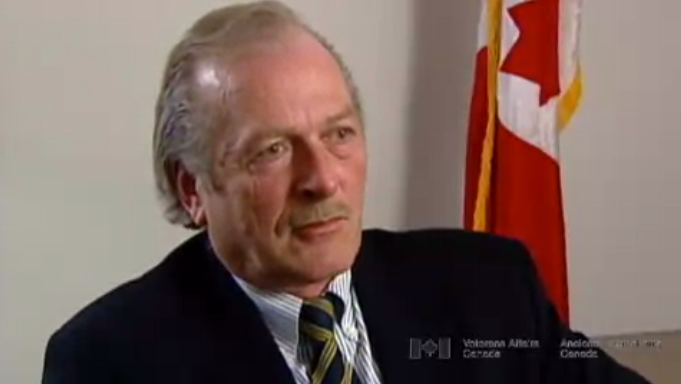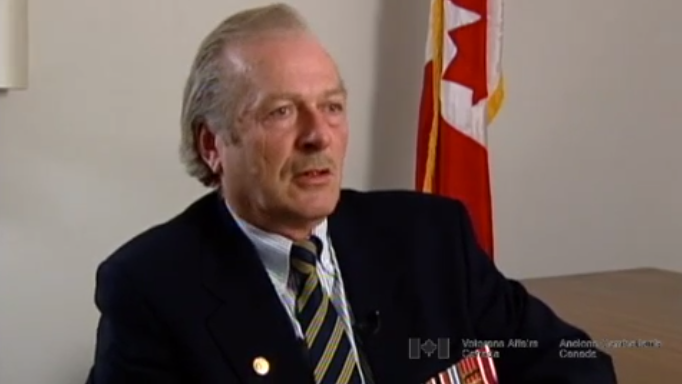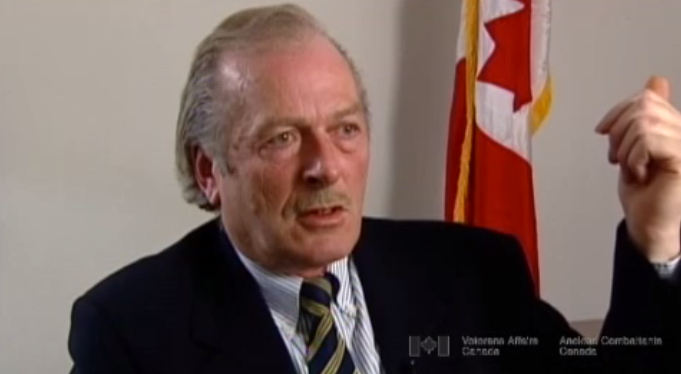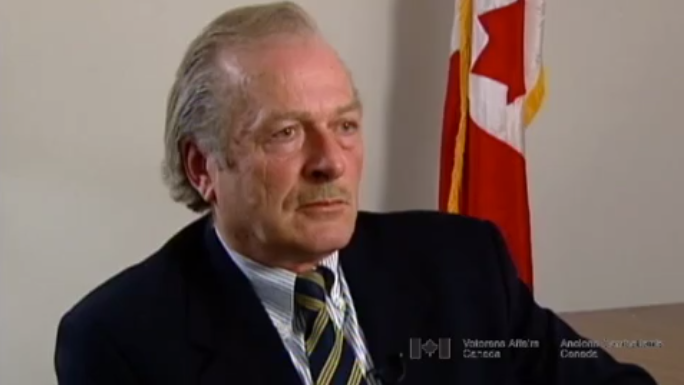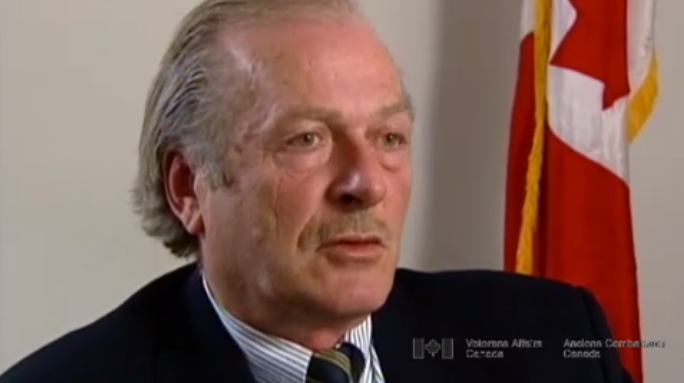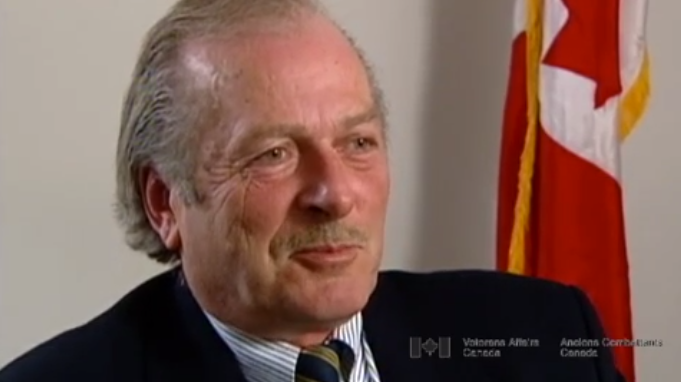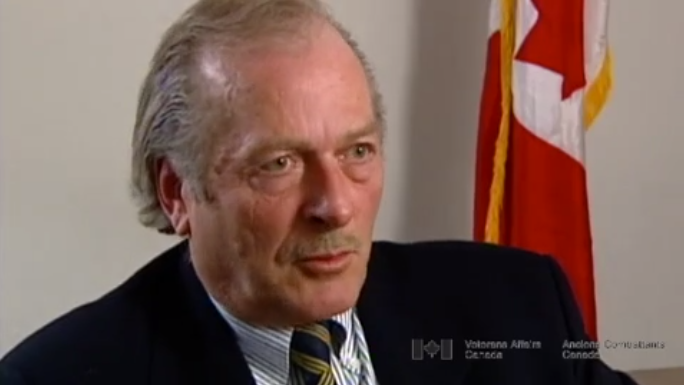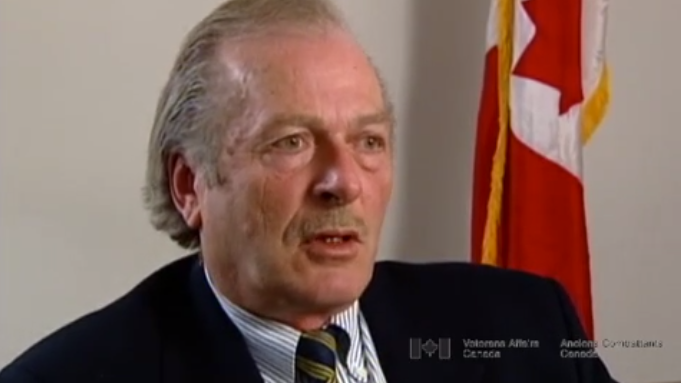Interviewer: You mentioned that in ‘89 when
you went to Oklahoma to join the AWACS.
Yes.
Interviewer: Can you tell me about that and
exactly what that stands for and what it is?
Airborne Warning and Control Squadron was
what I was serving on and the AWACS
is an American control system.
So it originally started out as a Boeing 707,
which is quite an old airplane,
they started developing it in the 50's,
late 40's the concept was developed and
the aircraft itself was started.
Developing the concept and how they were going
to build it and how they were going to get the
radar dome to turn and not spin the aircraft
into the ground at the same time.
Over a period of time, which took a
number of years, they started delivery on them,
I believe was in the early 70's,
and received their last one in 1982 I believe.
They wound up with a total of 34 with them,
on the American side of it.
I say the American side because NATO also
flies the 707 version of the AWACS.
There's a number of countries in the world
today that fly a variant of that, Great Britain
for example flies a 707 version of it, France does,
Saudi Arabia has four or five slightly different,
but the same thing.
Japan has bought a 767 version of the AWACS,
Australia is buying four of them as well,
so they're throughout the world now.
But they did start originally with the Americans.
Big airplane, 707, quite old now obviously,
very well maintained, the Americans are
extremely careful with that aircraft.
The value of it today would cost about
400 million to replace one airplane so it's an
extremely valuable asset that they have.
The radome itself that makes it really
noticeable as being an AWACS,
is about 40 feet across,
it's about six feet high in the centre of it and
it weighs about six ton. It's a pretty heavy thing,
but it's the way it's designed,
it, aerodynamically, it provides as much lift once
the aircraft is actually moving as it does weight,
it totally offsets the weight of it. The aircraft with
all the equipment in it and the radome on top
weighs about 300,000 pounds when it's full of fuel.
And 300,000 pounds, if you look at a Boeing 747
with all it's passengers on board,
you're looking at about the same weight.
And it's a quite a bit larger airplane so it's quite
a heavy airplane to do it. One thing that's really
unique about the American airplane which
takes a while getting used to is there's no
reverse thrust on the engines.
They, because there's so much electronic
equipment in the back they had to have
extra generators on board, to make room at
the engines to put the generators on board,
they had to take the thrust portion of it off.
So when you land, you've got breaks and that's it,
so you require quite a lengthy runway as well as
a runway that is dressed for the 300,000 pounds.
They carry, depending on the mission that your
flying you carry anywhere from 25 to a 40 person
crew, mix, male-female, mixed obviously in
the States of Canadian-American.
Very seldom will you see an airplane
flying with all American crew, they, we fit
right in when we do everything with them.
We originally went there as part of the
NORAD agreement is how we wound up in
Tinker flying on them, and it just expanded
over the years. I believe the big expansion
was around ‘87, ‘88, where we expanded
to about 40 Canadians flying out of Tinker.
With the same program we also have an
11 person group that flies on the
American AWACS out of Alaska,
which is kind of exciting for those, those folks,
I've never been stationed there but the
folks that are in Alaska really love it and
just beg to go back to Alaska.
It's quite a place.



